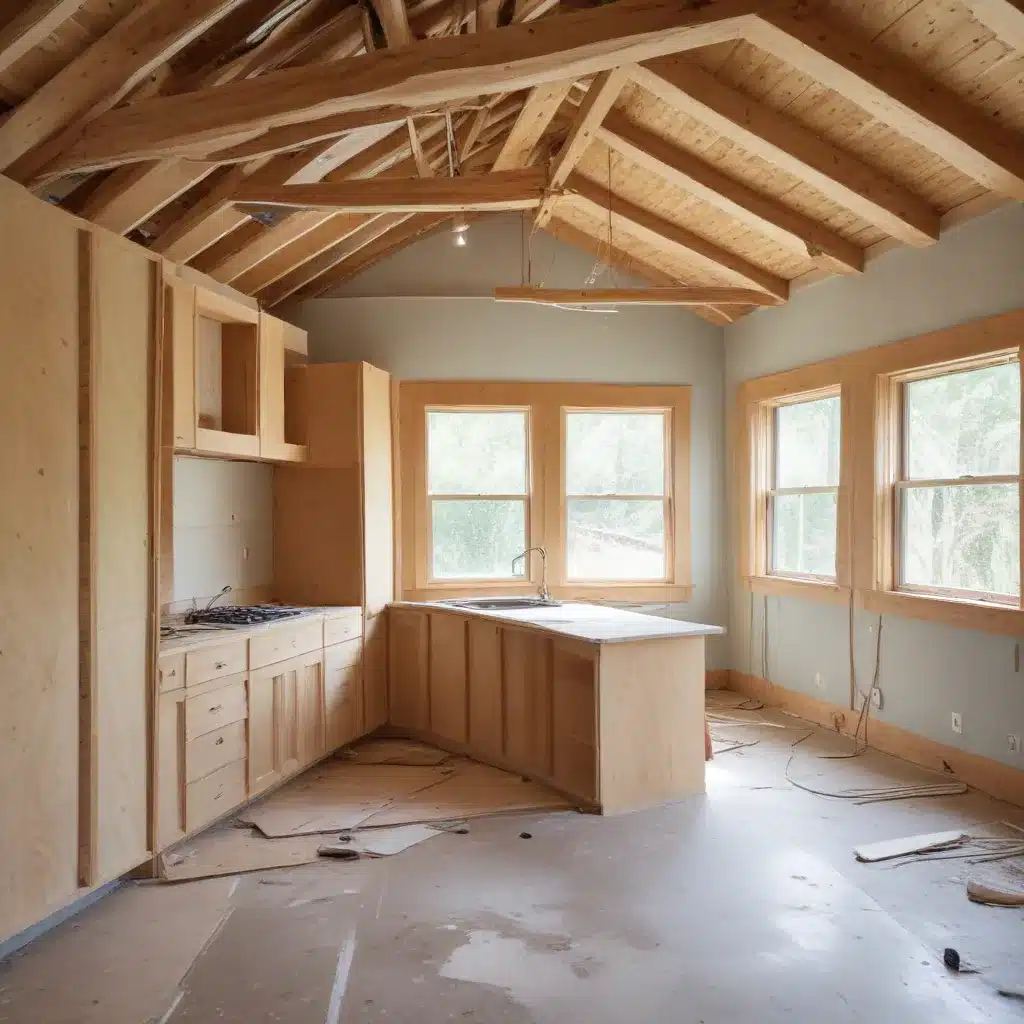In today’s world, where environmental consciousness is paramount, the concept of sustainable remodeling has gained significant traction. As an experienced home improvement consultant, I’m thrilled to share with you the myriad ways in which you can transform your living space while saving money and protecting our Earth.
Environmentally-Friendly Material Selection
The foundation of any sustainable remodel lies in the careful selection of building materials. Fortunately, there’s a growing array of eco-friendly options that can help you achieve your renovation goals without compromising the planet.
Recycled and Repurposed Materials
One of the most impactful ways to incorporate sustainability into your project is by utilizing recycled and repurposed materials. Consider materials like reclaimed wood, which not only lend a unique, rustic charm to your space but also have a significantly lower environmental impact than newly harvested timber. Similarly, recycled steel and plastic-based construction products can offer durable, cost-effective, and eco-friendly alternatives to traditional building supplies.
Energy-Efficient Building Supplies
When it comes to energy efficiency, your material choices can make a significant difference. Look for insulation made from renewable resources like sheep’s wool or straw bales, which can dramatically improve a home’s thermal performance while reducing energy consumption. Additionally, bamboo and cork are increasingly popular choices for flooring, wall panels, and other applications due to their sustainability and exceptional thermal and acoustic properties.
Sustainable Sourcing Considerations
Beyond the materials themselves, it’s crucial to consider the sourcing and manufacturing processes behind them. Opt for products that are locally sourced or manufactured in an environmentally responsible manner, as this can reduce the carbon footprint associated with transportation and production. Additionally, seek out third-party certifications, such as LEED or FSC, to ensure your materials meet rigorous sustainability standards.
Energy-Saving Home Improvements
Upgrading the energy efficiency of your home is a crucial aspect of sustainable remodeling. By making strategic improvements, you can not only reduce your environmental impact but also enjoy significant long-term cost savings.
Insulation Upgrades
One of the most impactful upgrades you can make is to improve the insulation in your home. Whether you’re adding insulation to the attic, walls, or crawl spaces, this simple step can dramatically reduce your energy consumption, leading to lower utility bills and a smaller carbon footprint.
Efficient Appliance Installations
When it’s time to replace old, inefficient appliances, opt for energy-efficient models that carry the ENERGY STAR® certification. These appliances, which include everything from refrigerators and washing machines to water heaters and HVAC systems, can significantly reduce your energy usage and associated costs.
Renewable Energy Integration
Consider incorporating renewable energy sources, such as solar panels, into your remodel. While the upfront investment may be higher, the long-term savings on your energy bills, as well as the environmental benefits, can make it a worthwhile investment. Additionally, many local and federal incentives are available to help offset the initial costs of renewable energy installations.
Water Conservation Techniques
Water usage is another crucial aspect of sustainable remodeling, and there are several strategies you can implement to reduce your home’s water footprint.
Low-Flow Plumbing Fixtures
Installing low-flow plumbing fixtures, such as showerheads, faucets, and toilets, can significantly reduce your household’s water consumption without compromising performance. These fixtures are designed to deliver the same level of functionality while using a fraction of the water, leading to substantial savings on your utility bills.
Greywater Recycling Systems
Considering a greywater recycling system can be a game-changer for your water conservation efforts. These systems divert used water from sinks, showers, and washing machines and repurpose it for irrigation or other non-potable uses, reducing your reliance on fresh, treated water.
Drought-Tolerant Landscaping
When it comes to your outdoor spaces, incorporating drought-tolerant landscaping can be a highly effective way to conserve water. By selecting native, low-maintenance plants that are adapted to the local climate, you can create a lush, visually appealing landscape that requires minimal irrigation, saving you money and preserving precious water resources.
Cost-Effective Remodeling Practices
Sustainable remodeling doesn’t have to break the bank. In fact, there are numerous budget-friendly strategies you can employ to make the most of your renovation budget while maximizing environmental benefits.
Budget-Friendly Renovation Tips
One of the keys to cost-effective sustainable remodeling is to prioritize high-impact, low-cost improvements. This might include simple upgrades like weatherstripping windows, upgrading insulation, or installing energy-efficient lighting. By focusing on these types of projects, you can achieve significant energy savings without a significant investment.
Maximizing Return on Investment
When planning your sustainable remodel, it’s essential to consider the long-term return on investment (ROI). While some eco-friendly upgrades may have a higher upfront cost, the ongoing energy and water savings, as well as potential government incentives or tax credits, can make them a wise financial decision in the long run.
Long-Term Savings Opportunities
Sustainable remodeling is not just about the initial project cost – it’s about the lifetime savings you can enjoy. By prioritizing energy-efficient appliances, water-conserving fixtures, and renewable energy sources, you can significantly reduce your monthly utility bills, effectively offsetting the initial investment over time.
By embracing sustainable remodeling strategies, you can transform your living space while positively impacting the environment and your wallet. Whether you’re tackling a full-scale renovation or considering small, targeted improvements, the wealth of eco-friendly materials, energy-saving technologies, and cost-effective practices available today make sustainable remodeling a smart and sensible choice. To learn more about sustainable home improvement, I encourage you to explore the wealth of resources available on Reluctant Renovator.




